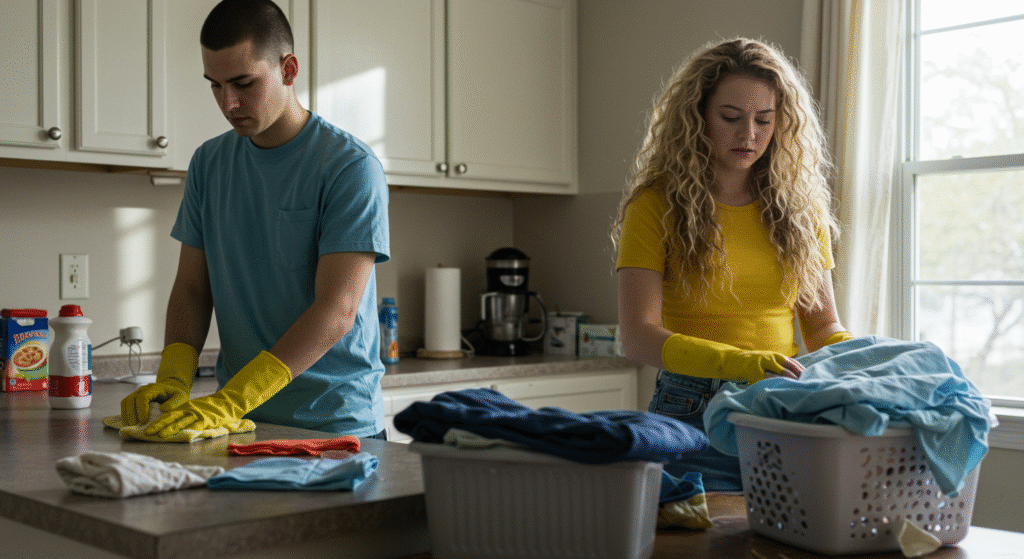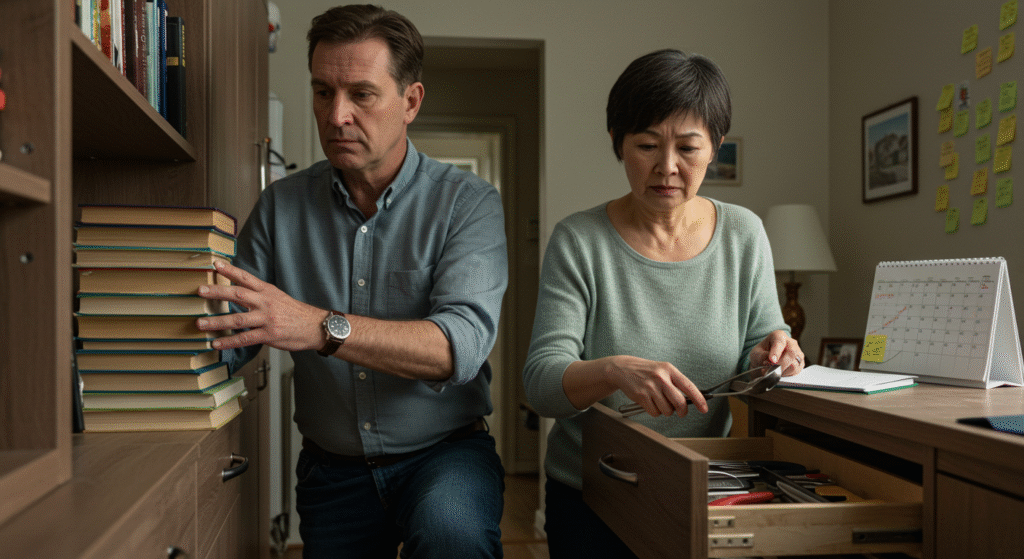Powerful Personal Journeys That Break the Silence and Stigma
Obsessive-Compulsive Disorder (OCD) is often misunderstood. For many, it’s considered a quirky preference for neatness or routine. But for those who live with OCD, it can be a constant battle with intrusive thoughts and exhausting rituals. Real stories from real people are essential in breaking the stigma and showing what OCD truly feels like.
In this article, we share powerful firsthand experiences from individuals with OCD to foster empathy, build awareness, and inspire support.
🌍 Why These Stories Matter
Telling personal stories of OCD helps:
- Raise awareness about the true nature of the disorder
- Combat harmful stereotypes
- Encourage others to seek help.
- Promote mental health advocacy.
Each story highlights a different form of OCD, because OCD is not “one size fits all.”

🧠 1. Sarah’s Story: The Fear of Harm
I check the stove 10 times before I can leave the house. I know it’s off, but my mind tells me someone might die if I don’t check again.”
Sarah, a 28-year-old graphic designer, has lived with Harm OCD since she was a teenager. She doesn’t fear harming others because she wants to — she fears it because of intrusive, unwanted thoughts that torment her.
To manage her anxiety, she developed rituals: checking doors, unplugging appliances, and re-reading messages to make sure they don’t sound offensive. These routines took hours.
With therapy, especially Exposure and Response Prevention (ERP), Sarah has learned to tolerate the anxiety without giving in to the compulsion.
“It’s still hard,” she says, “but now I don’t let OCD control my life.”
🧼 2. Jamal’s Story: Contamination OCD
“I used to wash my hands until they bled. If I touched a doorknob or a coin, it felt like poison on my skin.”
Jamal, now 35, didn’t understand what OCD was until his late 20s. He believed he was overly cautious for years until it consumed his life.
He avoided public spaces, wouldn’t shake hands, and cleaned up to six hours daily. Friends started drifting away. He felt ashamed, isolated, and scared.
With the help of a psychologist and support from OCD communities online, Jamal now manages his symptoms. He says medication helped stabilize his anxiety, but community and education gave him the strength to seek treatment.
🙏 3. Aisha’s Story: Religious OCD (Scrupulosity)
“I couldn’t stop praying, not because of devotion — but because of fear. I was terrified I’d offend God with a wrong thought or an imperfect prayer.”
Aisha, a 23-year-old student, has struggled with religious OCD for years. Her OCD fixated on moral and spiritual perfection. She’d repeat prayers dozens of times, seek reassurance from religious leaders, and feel paralyzed by guilt over harmless thoughts.
What made it harder was the lack of understanding in her community. Many thought she was just being “too religious.”
“I wasn’t being pious — I was suffering.”
With proper therapy and access to faith-sensitive mental health support, Aisha has started healing. Today, she advocates for others facing scrupulosity, especially in religious communities where mental health is still taboo.
❤️ 4. Diego’s Story: Relationship OCD (ROCD)
“I love my partner deeply. But OCD makes me question everything — do I really love her? What if she’s not ‘the one’? What if I’m just pretending?”
Diego has what’s called Relationship OCD. It causes obsessive doubt about relationships, no matter how healthy they are.
He used to constantly compare his Relationship to others, analyze every interaction, and mentally review whether he “felt enough.” The mental exhaustion took a toll on his self-esteem and nearly cost him his Relationship.
Therapy helped him realize these thoughts weren’t true — they were symptoms of OCD. With patience and education, Diego and his partner now navigate OCD as a team.
💬 5. Lena’s Story: Living Undiagnosed for Years
“I thought I was just weird. I didn’t know OCD could be in your head — not just visible rituals. I had mental compulsions no one saw.”
Lena lived with undiagnosed Pure-O (Purely Obsessional OCD) for over 15 years. Her obsessions were mental: intrusive thoughts about violence, sexuality, and morality. She didn’t perform outward rituals but had endless mental checking, rumination, and self-reassurance.
Because her OCD didn’t match the typical “clean freak” stereotype, no one noticed — not even her doctors.
It wasn’t until she read a blog about OCD that she saw herself in someone else’s story.
“Education saved my life,” she says. “If we don’t talk about these real stories, people like me will keep suffering in silence.”
🧩 Understanding the Variety in OCD
OCD is not just about washing hands or organizing pencils. These stories show the many forms OCD can take:
- Harm OCD
- Contamination OCD
- Religious OCD (Scrupulosity)
- Relationship OCD (ROCD)
- Pure-O (intrusive thoughts without physical rituals)
Every version is valid and deserves understanding, support, and proper treatment.

📚 What Helps: Therapy, Community, and Compassion
Treatment Options:
- ERP (Exposure and Response Prevention): Gold-standard therapy for OCD
- CBT (Cognitive Behavioral Therapy)
- Medication (SSRIs)
- Support groups and peer-led communities
Real stories show that recovery is possible — but only if people feel safe to ask for help.
📢 Breaking the Stigma Through Storytelling
Sharing personal stories is one of the most effective ways to:
- Break stereotypes
- Normalize mental health struggles.
- Empower others to speak up.
- Encourage early treatment
Each voice adds to a growing movement of awareness and advocacy.
If you live with OCD, know this: Your story matters. You’re not alone, and you’re not broken.
✨ How You Can Support OCD Awareness
Whether you live with OCD or not, here’s how you can help:
- Listen without judgment
- Share accurate information
- Avoid using “OCD” as a joke or adjective.
- Support mental health organizations.
- Encourage loved ones to seek help.
🔚 Conclusion: These Stories Deserve to Be Heard
OCD is real, and it’s serious but it’s also treatable. The more we listen to those who live with it, the more we dismantle the silence and stigma.
Sharing these real-life stories opens the door to healing, empathy, and hope.


Leave a Reply